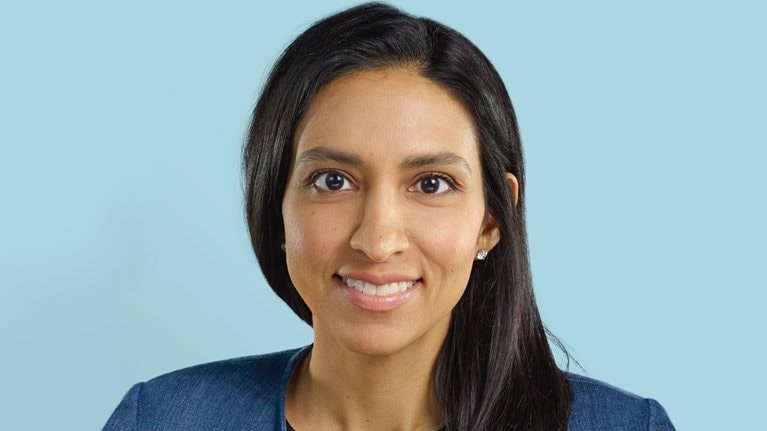Calls for reform on the American form of capitalism had already begun prior to the COVID-19 pandemic. Faced with growing inequality and inequity across society, disproportionate workforce changes affecting the most vulnerable groups, and growing existential challenges, such as climate change, people around the world are poised for a global shift on how they think about growth and prosperity well into the future.
McKinsey’s Astrid Sandoval recently sat down with Dambisa Moyo, global economist, board member, and author of the upcoming book How Boards Work: And How They Can Work Better in a Chaotic World (Basic Books, May 2021), to discuss that shift. Their conversation covered the macroeconomic trends shaping the global economy, the rising interest in stakeholder capitalism, and how boards can influence the move to a more inclusive and diverse future.
As a native Zambian and one of the youngest women to join the boards of Fortune 500 companies across multiple regions and sectors, Moyo offers a unique perspective on how the world can begin to rebuild. From her vantage point as a current board member for 3M, Chevron, Condé Nast, and the University of Oxford investment committee, Moyo has navigated through the corporate, economic, and social uncertainties brought about by the COVID-19 crisis and shares firsthand understanding of how to drive enduring change—and what may come next. The following is a condensed and edited version of her conversation with Sandoval.
Accelerating macroeconomic concerns
The arrival of the COVID-19 pandemic was an accelerator of many of the downside scenarios that economists like myself, but also people focused on investing, were concerned about: worsening economic growth, the growing impotence of public policy, and catalyzing existing economic headwinds.
Starting with the trajectory of low economic growth, many countries—both large and small—were already struggling to meet the minimum 3 percent rate of growth needed to double per capita incomes in a generation. Add to that the aftermath of the 2008 financial crisis and what it meant for monetary and fiscal policy. We were already seeing negative interest rates combined with enormous debts and deficits that governments, in particular, but also corporate balance sheets and households, were already carrying.
Combine these concerns with a multitude of economic headwinds, including the risk of technology advances leading to a jobless underclass, the growing demographic shifts, and the ongoing challenges to living standards worldwide, and it’s no surprise that, before the COVID-19 crisis, we were already beginning to see a move away from the principles of globalization, as well as a reduction in growth and trade. We’ve seen protectionist measures emerge that limit the flow of capital, and we’ve seen a growing challenge to immigration. We’ve also started to see real concerns about a split internet—the idea that within the next decade, we may see competing intellectual-property platforms by region: one China led and another US or Western led. The pandemic has accelerated and potentially reinforced some of these trends.
As part of the great reset after the COVID-19 crisis, public-policy makers, investors, and economists may need to reevaluate and refresh how we think about the best models for growth—from perhaps a less ideological perspective and a more pragmatic lens.
Progressing to stakeholder capitalism
We are in desperate need for solutions from governments and businesses alike, not just to sort out these large public-policy problems of education, healthcare, and infrastructure but also to continue to grow the so-called GDP pie.
To help address the multitude of challenges we face, we need to be much more focused on what I’d call “broadening the utility function.” This is about moving beyond Milton Friedman’s worldview that corporations exist to serve shareholders above all others toward a wider role and responsibility for their staff, customers, and communities, as well as toward being a partner to governments and to nongovernmental organizations.
As a practical matter, corporations are already moving away from ring-fenced departments for corporate social responsibility and a pure financial-shareholder model. They are moving toward more integrated reporting on issues about the broader community and stakeholders. For example, corporations are refining metrics that gauge progress in combatting climate change and supporting diversity and inclusion.
Debating the trade-offs of public- and private-sector collaborations
The most important thing is to “level set”—to better understand the complex trade-offs that need to be made to meet the global challenges we face. For example, like most complex challenges, the COVID-19 crisis is multifaceted, multidimensional, and multiperiod. Originally defined and characterized in a very unilateral way as a healthcare challenge, it quickly became clear that there are many knock-on effects and economic offsets from the decisions made around the healthcare response.
We have social issues—everything from domestic violence to children’s welfare and how society will continue to move forward—that are important aspects of addressing a pandemic that I don’t think were at the table at the very beginning. If you go further than that, there are real implications for how society will emerge from this crisis.
So it’s these trade-offs that become the foundation for any kind of execution plan. The approach has to be sensible and have all the different actors at the table to offer their perspectives. Public- and private-sector partnerships may help deliver the economic outcomes needed, as they have in the past—for example, in supporting infrastructure development. In the United Kingdom, the government is helping train young people with life skills, an important input to the private sector.
Derisking the future with new metrics
We live in a technology-driven world that allows us to capture more information and inputs from a broader array of stakeholders than ever before. Corporations now need to think about where they get their information, how they get their information, and indeed, what kind of information they’re receiving.
Traditionally, corporations are interested and driven by metrics such as returns and cost of capital, but there are new metrics available that can help guide capital allocation and risk mitigation as the role of the corporation becomes much broader. For example, new social platforms can provide additional insights about what employees, both current and former, think about the operations at an organization. Other technology platforms can offer information to customers on the provenance of items. These new feedback loops from a broader set of stakeholders are increasingly more important to corporations in terms of how they think about mitigating for risk but also for spotting where opportunities may lie.
However, we need sensible conversations about this notion of trade-offs and the nuance of the challenges that corporations, boards, and many other decision makers in public policy have to contend with in order to land in the right place. The real challenge is going into the details and looking at the metrics and how boards are operating to help deliver the necessary outcomes—for example, how a company is using technology to better allocate human and financial capital.
Delivering change through board actions
Fundamentally, we should take pride in the fact that we have a global system in which goods and services can be delivered in the best of times but also even in times of crisis. We’ve been able to work together in a constructive way, with the help of corporations, to address the challenges presented by the COVID-19 crisis. This gets to the heart of what the role of a board is, what levers a board has to implement change, and the opportunity and scope there is for boards to reinvent themselves.
From my vantage point, boards’ responsibilities are threefold. Boards are responsible for overseeing the strategy of corporations, the hiring—and indeed, firing, on some occasions—of the CEO, and company culture. More and more, certainly in the past ten years that I’ve been a board member, boards are now expected to opine and to provide oversight on what I would call the “cultural frontier.”
Beyond the nonnegotiables, such as excellence and professionalism in the workplace, the cultural frontier includes the more current cultural issues around data privacy; environmental, social, and governance issues; pay equity; gender and race diversity; worker advocacy; geopolitical tensions; and concerns about short-termism, to name a few. Boards need to navigate through this long list of challenges and how they hold management accountable for the important and expanding role that purpose plays in corporations.
As a handful of individuals with the skill sets and abilities to think about the larger, more systemic societal questions, boards don’t tend to dictate specifics on how it should be done. Rather, they engage with and discuss the trade-offs, limitations, and levers, as well as opportunities for corporations to act and engage. Beyond managing the downside risks of a more balkanized world order, boards are also trying to spot economic opportunities.
Beyond managing the downside risks of a more balkanized world order, boards are also trying to spot economic opportunities.
Understanding what may come next
Over the past several months, as we’ve continued to think about a reset to a more equitable future, I’ve looked for clues in recent history that can guide our thinking to what comes next. The best guide I’ve found was from the Gilded Age in the United States, a period between 1870 and 1900 defined by high economic growth, globalization, trade in capital flows, immigration, and relatively small government action on the economy.
It was also a period of deep income inequality followed by dramatic global events that changed the world materially: World War I, the Spanish flu, and the financial crash of 1929. The Dow Jones Industrial Average in 1929 peaked at 381 points. The next time it reached 381 points was 25 years later in 1954. That really underscores the scale of what we may be facing today.
We had the financial crisis of 2008 followed now by an economic, as well as healthcare, shock with the COVID-19 pandemic. What the Gilded Age and the subsequent challenges of the early 1900s tell us is that we may be in for a period of more progressive politics and more government action to manage debt and deficits in terms of taxes and antitrust issues. On a relative basis, we may face greater deglobalization, more aggressive regulation, and potential challenges to many oligopolies in different sectors from the banking, pharmaceutical, airline, energy, and technology industries.
In a world of low—and maybe even no—economic growth and deteriorating equity returns, corporations will be more challenged. But I suspect that there will also be great things to come, including a period of great innovation. We are seeing China take on a bigger role on the global stage. Technology has done enormous things for retail and communication. We have not yet seen what digital technology is capable of in terms of healthcare, education, and other big, global public goods. There is real scope for massive transformation in how we live and the things that we do.
I am fundamentally an optimist, but I’m also very much a realist. I think we need to be sensible. And we do need to work together, most critically, across nations, across industries, and across education backgrounds in order to help solve these big world challenges.
Comments and opinions expressed by interviewees are their own and do not represent or reflect the opinions, policies, or positions of McKinsey & Company or have its endorsement.


